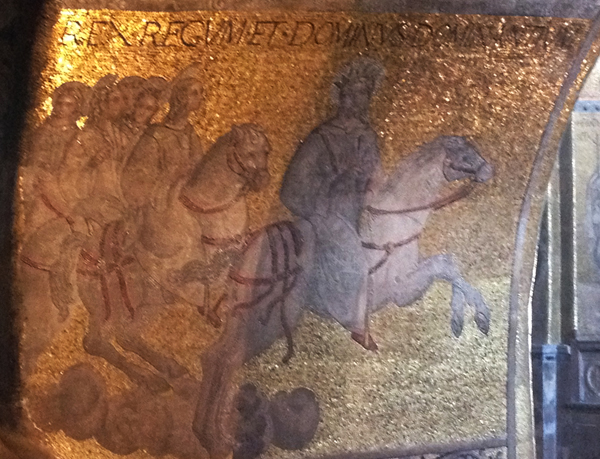The King of Kings

12th century?
Mosaic
St. Mark's Basilica
This mosaic pictures Revelation 19:11-16. The speaker sees a figure riding out from Heaven on a white horse, followed by "the armies of Heaven" also on white horses and wearing "clean white linen." His name in the text is written on his cloak; in the mosaic it is inscribed above: REX REGUM ET DOMINUS DOMINANTIUM, "King of Kings and Lord of Lords."
Revelation adopts the phrase from I Timothy 6:15, which in turn adopts the "King of Kings" part from a title ascribed to foreign kings in Ezra 7:12 and Daniel 2:37 but to God himself in II Maccabees 13:4.
At 19:13 he is also called "the Word of God" so clearly he is Christ. The mosaic accordingly gives him a youthful appearance, a crown, and a short, dark beard. The men in the armies have no beards, probably to associate them with the 144,000 virgins of 14:1-4 who "were not defiled with women."
Most of the mosaics in the cathedral are from the 12th century, but it is possible that this may be one of the many that were done later.
View this image in full resolution.
Read more about images of Christ in Majesty.
Photographed at the cathedral by Claire Stracke, shared under Attribution-NonCommercial-ShareAlike license.